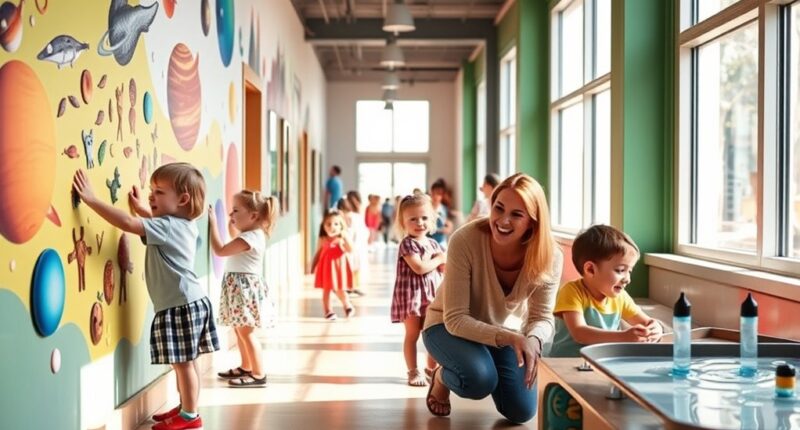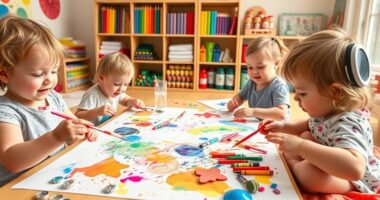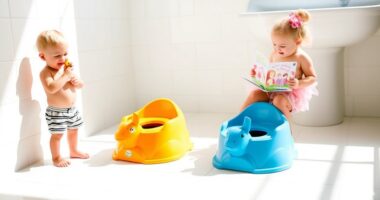Toddler-friendly museums and attractions turn educational outings into exciting adventures that spark curiosity in little ones. Early visits can boost your child’s cognitive, emotional, and social skills. Interactive exhibits engage their senses and creativity, while diverse programs guarantee inclusivity for all families. Planning ahead makes for a smooth visit, allowing you to focus on fun and discovery. Explore tips and resources to enhance your family’s museum experience and uncover even more ways to make learning enjoyable.
Key Takeaways
- Look for museums with interactive exhibits that encourage sensory play and hands-on activities tailored for toddlers.
- Research toddler-friendly programs and special events to enhance educational engagement during your visit.
- Choose museums that offer accessibility features, such as sensory-friendly events and programs for families with disabilities.
- Plan your visit during less busy times, and prepare snacks and comfort items for a stress-free experience.
- Incorporate follow-up activities at home, like related books or games, to reinforce learning from the museum visit.
Importance of Early Museum Visits

While you might think of museums as places for older children or adults, early visits can considerably shape a toddler’s development. Exposing your little one to various exhibits enhances cognitive skills, boosting critical thinking and problem-solving. Engaging in these activities aligns with the key domains of development that emphasize the influence of environmental interactions on growth. Additionally, visiting museums can provide holistic approaches to learning, integrating emotional and social development into their experiences. Incorporating elements like water features in outdoor museum spaces can also create a calming environment that further enhances exploration.
As they explore, they begin to understand different perspectives, fostering empathy and emotional growth. Socially, museum outings encourage interactions with diverse groups, helping them develop essential social skills. Engaging in these outings also nurtures self-care and mindfulness, promoting emotional well-being as toddlers learn to appreciate their surroundings.
Studies show that children who visit museums often achieve higher grades in reading, math, and science. Beyond academics, these experiences ignite curiosity, leading to a lifelong love for learning. Additionally, engaging in educational outings can inspire a healthy lifestyle, as parents often pair these visits with nutritious meals or snacks, promoting overall well-being.
Interactive Learning Experiences

Interactive learning experiences at museums captivate toddlers and encourage their natural curiosity. Spaces like Sprouts at the Minnesota Children’s Museum offer sensory play, inviting your little ones to explore through hands-on activities. Freshly squeezed juices, such as orange juice, can be a refreshing treat during your outing, providing both hydration and essential nutrients. Additionally, providing unsalted butter as a snack can enhance their energy levels and support healthy growth. Regular engagement in sensory activities promotes cognitive development and fine motor skills.
Immersive environments, such as Arthur’s World, let them engage in role-playing, mimicking real-world settings. Exhibits like The Studio promote art and creativity, giving them materials to express themselves visually. Interactive science exhibits at places like Exploration Place spark their interest in scientific principles, while creative practice nurtures their ability to think outside the box. These experiences enhance problem-solving skills, cognitive development, and social interaction with peers. Incorporating toys like Montessori-Inspired ThinkMax Matching Eggs can further reinforce cognitive skills through matching activities.
Accessibility and Affordability
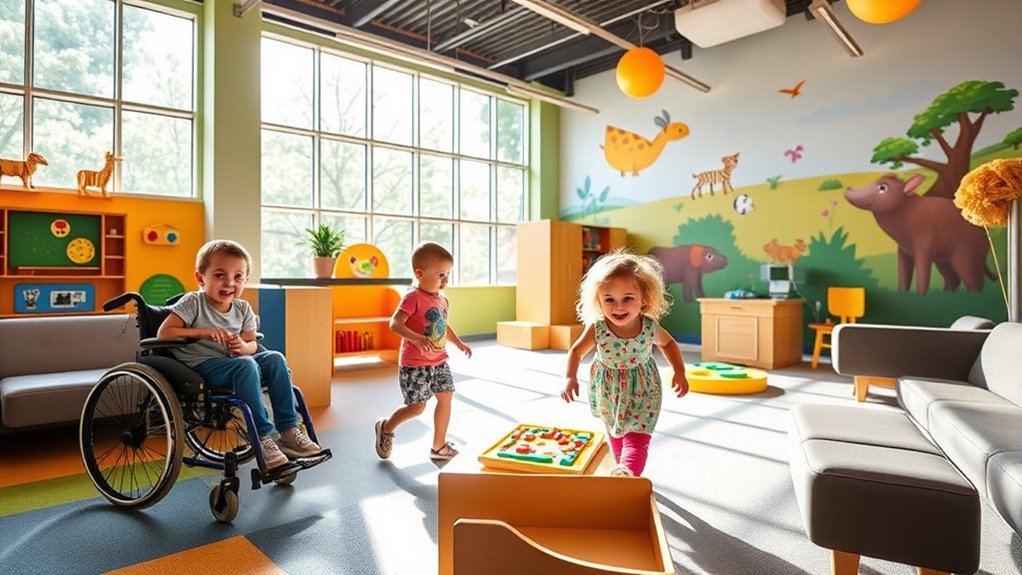
Museums that prioritize interactive learning experiences also focus on making their spaces accessible and affordable for all families.
Many venues offer programs specifically designed for visitors with disabilities, including sensory-friendly events for children on the autism spectrum. They’ve improved physical access with elevators and better signage, ensuring everyone can navigate comfortably. The commitment to inclusive environments also enhances the overall experience for all attendees. In line with this, studies indicate that pet therapy can also be beneficial in creating supportive and engaging environments for children with special needs. Furthermore, emerging regulations in various sectors could also inspire museums to adopt more inclusive practices. Additionally, many institutions incorporate sustainable practices to further enhance their commitment to inclusivity and community support.
To enhance affordability, museums often provide free or discounted tickets for low-income families and collaborate with community groups to offer accessible educational experiences.
By securing grants and sponsorships, they support inclusive programs while reaching out to underserved communities. These efforts not only foster community support but also create a welcoming environment where all families can enjoy enriching experiences together. Additionally, holistic living is often a focus in these venues, promoting a sense of well-being for all attendees.
Community Engagement and Diversity
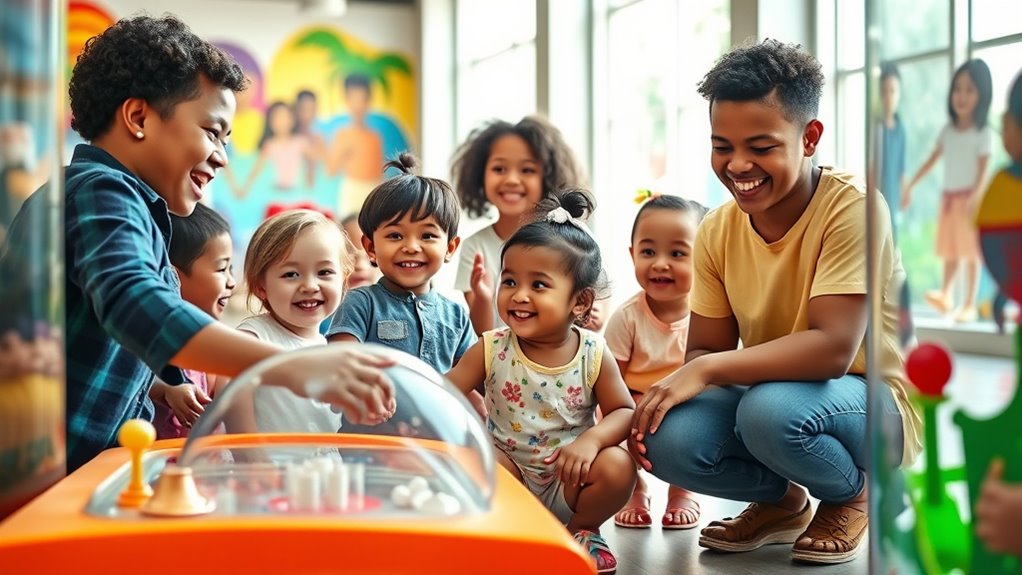
To foster a vibrant community, engaging with diverse audiences is essential. Museums can achieve this by partnering with local organizations, ensuring their programs reflect community needs.
Through outreach initiatives, they bring educational activities to underserved areas, promoting inclusivity. Hosting cultural events and festivals not only celebrates traditions but also strengthens community bonds. By incorporating STEM education into their programs, museums can further enhance critical thinking and problem-solving skills among young visitors. Additionally, integrating nighttime meditation techniques into family programs can promote relaxation and enhance the overall learning experience. Establishing clear co-parenting plans can also help ensure that families engage in meaningful experiences together. Furthermore, providing hands-on experiences related to local history can deepen children’s understanding of their community.
Outreach initiatives and cultural events unite communities, celebrate traditions, and promote inclusivity for all.
By offering volunteer opportunities, museums invite locals to take ownership of their space. Additionally, having diverse staff and providing multilingual materials enhance accessibility for all visitors.
Inclusive programs and hands-on experiences help families connect with different cultures. By embracing diversity, museums create enriching environments that resonate with everyone, allowing children and parents to learn, appreciate, and grow together. Furthermore, by implementing personal growth techniques, museums empower families to embrace learning and exploration in their community.
Tips for Planning a Family Museum Outing
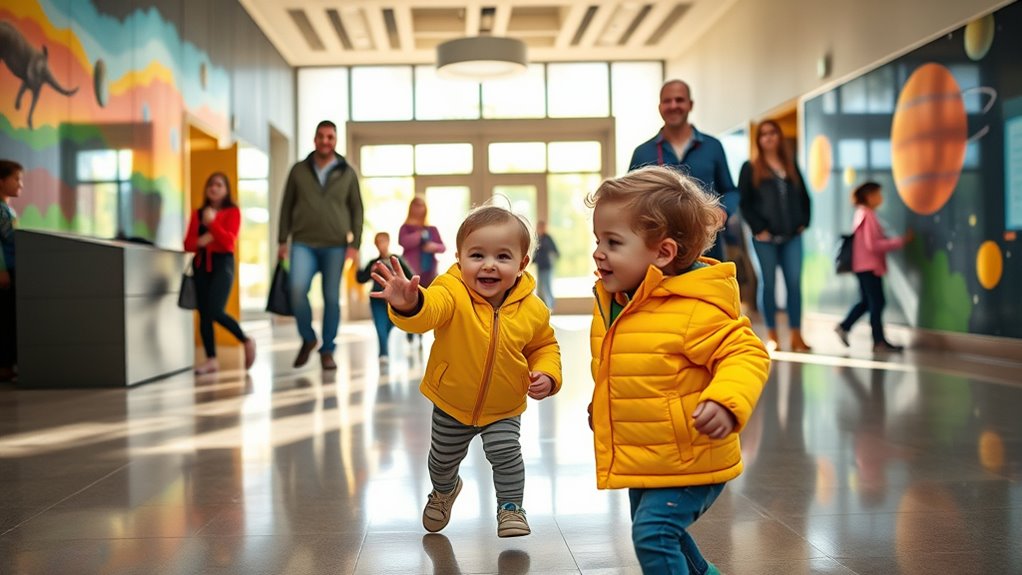
Engaging with diverse audiences in a community setting is a great way to foster appreciation for learning and exploration.
To guarantee a smooth family museum outing, start by researching the museum’s toddler-friendly exhibits and facilities. Visit during less busy times, like weekdays, to enhance comfort and enjoyment. Prepare for transportation, parking, and food options to avoid last-minute stress. Establishing consistent routines can also help your toddler feel more secure during the outing.
Look for interactive exhibits and guided tours that cater to families, and consider creating a scavenger hunt for added fun. Set realistic expectations with shorter visits and planned breaks to match your toddler’s energy levels. Additionally, having advance directives in place can help ensure decisions are made in line with family values for any unforeseen situations during your outing.
Finally, encourage questions and discussions about exhibits to extend learning at home. With thoughtful planning, you’ll create a memorable experience for your family.
Frequently Asked Questions
What Age Group Is Most Suitable for Toddler-Friendly Museums?
When considering age groups for toddler-friendly museums, you’ll find that children aged 1 to 8 years old are the most suitable.
These museums design their exhibits and activities to engage toddlers, promoting learning through play. Your little one will thrive in environments tailored for their developmental stage, with hands-on activities and interactive experiences that spark curiosity.
Engaging with peers in these settings also helps your child develop essential social skills during these formative years.
How Can We Prepare Our Toddlers for Museum Visits?
Did you know that 80% of toddlers learn best through hands-on experiences?
To prepare your toddler for a museum visit, start by exploring the museum’s website together. Plan your trip during less busy times, like mid-week mornings. Read related books or watch videos to spark excitement.
Create a scavenger hunt or play “I spy” while you’re there. Remember to explain museum rules clearly and be ready for breaks to keep their energy up!
Are There Any Special Events for Toddlers at Museums?
Yes, there are plenty of special events for toddlers at museums!
You’ll often find monthly programs like “Babies at the Museum,” designed just for little ones. Some museums even host sensory-friendly hours, making visits more comfortable.
Look for hands-on workshops focusing on early development or art-inspired activities where your toddler can create.
These events not only entertain but also promote learning in a fun, engaging way. Don’t miss out on these opportunities!
Can Toddlers Participate in Museum Workshops and Classes?
Imagine your toddler diving into a world bursting with colors, sounds, and excitement! Yes, toddlers can absolutely participate in museum workshops and classes.
These programs are designed just for them, focusing on themes like art or music that’ll ignite their creativity. You’ll often find small class sizes, ensuring personalized attention.
Plus, your involvement enhances their experience, making it a delightful bonding opportunity while they explore and learn in a fun, interactive environment.
What Should We Bring for a Comfortable Museum Outing With Toddlers?
For a comfortable museum outing with toddlers, you should pack essential items like diapers, wipes, and extra clothing for unexpected messes.
Don’t forget a stroller for rest and snacks to keep their energy up. Bring familiar comfort items to soothe them and consider activity bags or sketchbooks to engage their creativity.
Planning your visit during quieter times can make the experience smoother, ensuring everyone enjoys the day without feeling rushed or overwhelmed.
Conclusion
As you explore toddler-friendly museums, you’ll discover that learning can happen in the most unexpected places. Coincidentally, your child might find a favorite exhibit that sparks a lifelong passion for art or science. These outings not only create cherished memories but also foster curiosity and creativity in your little one. So, pack your bags and head out—you never know what delightful surprises await you at the next stop on your educational adventure!
